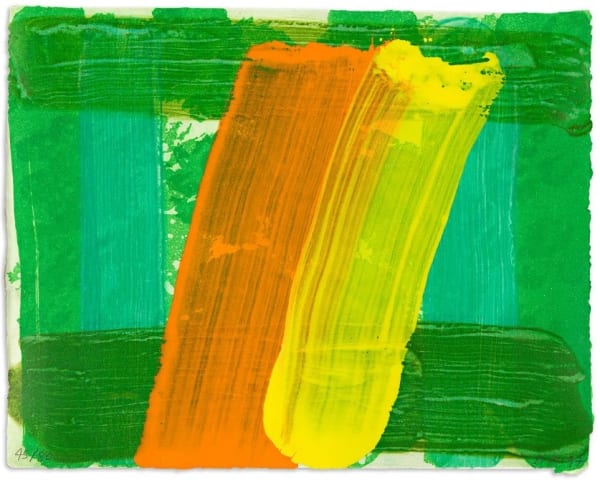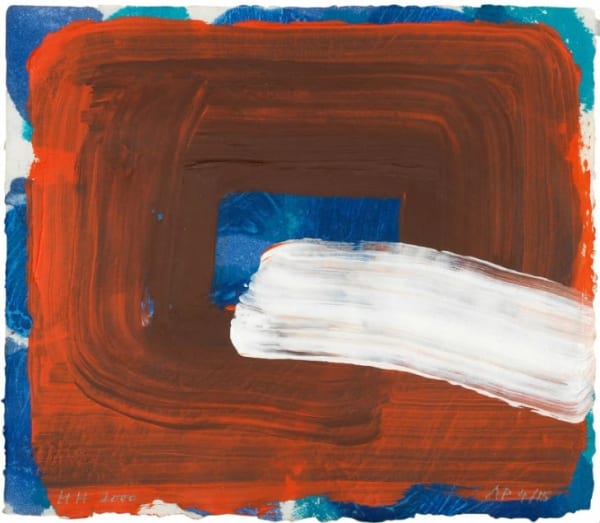Howard Hodgkin
"Don't paint the thing itself; paint the effect it produces."
One of Britain's most celebrated post-War artists, Hodgkin created over a hundred editioned prints during his long career. Their raw physicality and emotional intensity has ensured them a privileged position in the eyes of collectors.
Hodgkin's seemingly loose, spontaneous paintings were usually the result of a prolonged and often agonising focus; it was not uncommon for him to spend five years working on a single panel. His luminous palette and sensual application of paint constitute a visual poetry that is by turns subtle and raucous, joyous and elegiac, intimate and universal. He layers colour like memory, conjuring fragments of half-remembered stories that repeatedly sink and resurface.
Printmaking was an important facet of Hodgkin's work that he considered distinctly separate from his practice as a painter. The collaborative nature of a print workshop stood in stark contrast to the solitude of his London studio and required a different way of working. He explored the full spectrum of print techniques, embracing the unique effects that each offered. Hand-colouring - and the way it blurred the distinction between printing and painting - became an important element in his graphic work.
In 1986 he began a lengthy collaboration with master printer Jack Shirreff at the 107 Workshop in Wiltshire. Shirreff introduced him to the carborundum technique, in which silicon carbide is applied to the printing plate to create sculptural texture in the paper once it has been run through the press. This contributed further to the impression of each print being a unique work in its own right, with its own subtle differences in execution.
Hodgkin represented Britain at the Venice Biennale in 1984 and won the Turner Prize in 1985. He was knighted in 1992 and made a Companion of Honour in 2003. He was the subject of a major retrospective at Tate Britain in 2006. His prints appear regularly at auction and he is one of the most collectible British artists of his generation.




